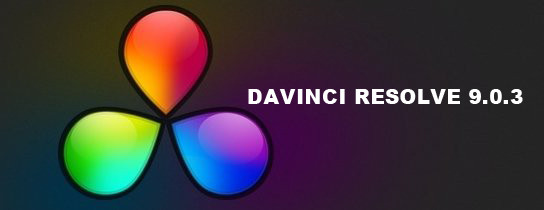A few days ago Blackmagic Design announced the immediate release of a new version of its DaVinci Resolve color correction system. Version 9.0.3 is the latest update to the recently introduced DaVinci Resolve 9, which brought with it a completely redesigned user interface to optimize speed and eliminate settings configuration and other unnecessary processes (you can read more about it here).
According to the company, this revision of the interface was created with the intention of making the most of the new features that had been introduced over the last few years to Resolve, such as automatic eye matching in s3D work, multi-layer timelines and new XML, format and camera support.
Now, with the 9.0.3 update there is one new feature that has been particularly highlighted. This is a timecode feature that allows cameras that do not support it to also work at a professional level and work with these types of workflows. From a generator, it records into one of the camera audio tracks the timecode; this is combined with the new Media Pool reader feature. Thus, Resolve is able to read linear timecode from the audio tracks, and immediately update the video timecode for these clips. Where previously there was a limitation to be able to synchronize audio due to the lack of codes, and thus be able to use this material in subsequent post production processes, Resolve now makes it possible to use footage recorded with “non-professional” cameras.
The CinemaDNG control palette has been improved, making it possible to display camera metadata related to color temperature and hue. So when colorists are working with CinemaDNG files, such as those from the Blackmagic Cinema Camera, they will have more precision and capabilities.
In addition, clip management via AAF or XML import has also been improved; it is now possible to specify clips that are in multiple library folders when importing. And for users working with S3D, they will now have the ability to automatically reset the image, transforming the alignments while adjusting the stereoscopic convergence.
XML support has also been added to the latest version of Final Cut Pro X, version 10.0.6 (which you can read about in this article).
In addition to these new features, the new version includes several new supports and enhancements to bring this powerful color correction tool fully up to date with the latest industry changes. In terms of raw formats, ARRI RAW debayering and support for the Canon C500 has been improved, while new support for DPX and Phantom Cine grayscale files will be supported for both playback and color grading. In addition, XML speed changes from Adobe CS6 Premiere Pro will also be supported.
Within the system, the update speed of audio waveforms in the GUI has been improved; support for single frame sequences without numbers has been added; for SDI output, burn ins are now available; there are new keyboard shortcuts; the output size will now be linked to the track mode; and new fields will be available in the ALE export.
As a last new feature, the JL Cooper connection panel has been updated for OS X 10.8.2.
DaVinci Resolve 9.0.3 is now available for download from the DaVinci Resolve website. This update is completely free for all Resolve and Resolve Lite users.
If you are already a DaVinci user, or not yet but would like to get to know the system, at 709 Media Room we have two DaVinci Resolve courses that might interest you: an advanced one with looks and color correction techniques(see all the information) and another one for beginners, an intensive but very complete course(here you can see the details).


